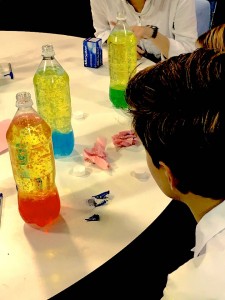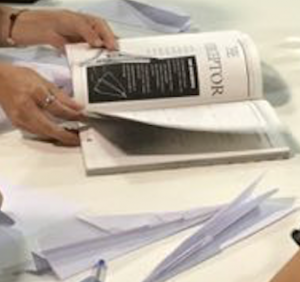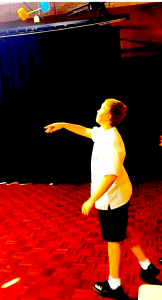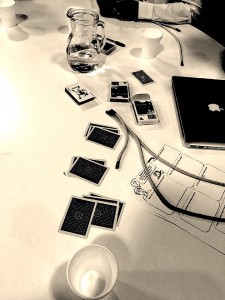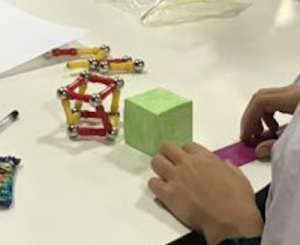Of course, if you’ve been following this blog you already know that one of my professional goals was to teach pre-service teachers and that this semester I am privileged to have my own tutorial group of 29 students. Given the large number and the course outline which stipulates that they must prepare and deliver a 30-minute lesson first to a couple of Year 7 students in a school -you can read about that here – and then to their peers during our tutorial time over 6 weeks it leaves me very little time to review or give feedback out loud. Our sessions are all about getting everyone a turn to deliver their class, while feedback is provided in writing or sent via email after the sessions. I have to say, there has been much learning in these sessions and as second year students they have done a great job!
Next week the students are due to go out on their professional practice rounds and so there will be no tutorials scheduled for two weeks after which there is only one more session for the semester aaarrgghhh!
Hence this blog post. I really want my pre-service teachers to know the following:
1. Relationships

baggage
All of you have delved into this area at some point in your peer teaching session but I cannot stress it enough for when you are teaching and learning students. It does not take much to learn your students and does get easier the longer you remain in the most rewarding of all professions. However, sometimes we forget, especially when our own baggage comes in with us into the learning space. I have always said and will continue to do so – when going into your learning space, leave your baggage outside as there will be no room for it given there are between 25 and 29 other pieces coming in. Please remember that those students come into the learning space with needs, some with more needs than others, but they always need to feel safe, to be respected, to be loved (you know what I mean here) and for you to believe they can and be prepared to show them how.
2. Aims & Objectives

SMART goals
There is a clear difference between aims and objectives but they are constantly running into each other. Your aim (usually only one) is what you hope to achieve or the overall big picture item. The objectives are the steps that need to be taken to achieve the aim. In other words long- term plan and lots of short term plans to make the journey more enjoyable, less stressful and more achievable. Objectives usually begin with verbs – doing words. I encourage you to use the S.M.A.R.T goal process in developing them.
By the end of the lesson/class/week the students will be able to….(now list the objectives based on SMART).
3. Information overload
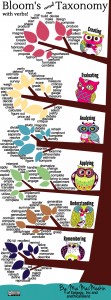
MacMeekin’s infographic on Blooms ‘revised’ Taxonomy
So you are about to plan and teach a class -how much information is enough? By information I mean knowledge and skills. I think you can never have enough knowledge and skill but one can only digest certain amounts at particular times. This is mostly true if you are ‘feeding’ them the information. I want to remind you that you don’t have to have all the knowledge nor do you have to give them all the answers. I’d like to see you take more risks and allow time for students to explore a little more and hence develop their own skills and knowledge. Consider practical applications to encourage your students to think, to evaluate and to analyse. Why do they need to know this? How will it help them in the future? These are sometimes really hard questions to answer especially when there is a set curriculum to get through. Don’t be afraid to accept any teaching moments that occur BUT be wary you are not leading them down the garden path. Incorporate into your lessons some Bloom’s Taxonomy – you don’t have to do it all, all of the time but we do have to move from just receiving and regurgitating knowledge for testing and then forgetting all about it. Create ‘fun’ ways for them to seek, find and apply.
4. Learning activities

‘FUN’
While it is important for students to develop collaborative skills, there are many who don’t enjoy it, feel they have nothing to offer, or take advantage of the others and choose not participate. Sound familiar? As a pre-service teacher you need to build a repertoire of different ways you can get them to collaborate without saying, “Okay now let’s get into groups and discuss…” Sometimes it’s important to allow them time to think on their own or perhaps with just one other peer. The way you ask is also crucial – let them know there is no one answer – I always like to say for example, “What do YOU think of ….?” ” Can you give me an example from your own experience ….” “What does your partner think of ….” These types of questions don’t require correct answers because it’s their opinion and these are the types of queries that help build confidence and lets them know that what they think is important and they are encouraged to share it if and when they wish. Can you think of ‘fun’ ways to group your students without exclaiming the dreaded “Okay now let’s get into groups and discuss…”? Why not share them below so we can all begin filling our tool box.
5. Thinking scaffolds
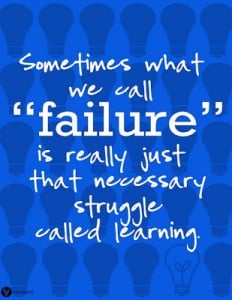
FAIL – First Attempt In Learning
Every student has different learning needs and every class is different and I understand that this can be quite overwhelming for any teacher but most especially for pre-service teachers. Don’t be intimidated by this, remember what I said; each of your students needs to feel safe in your classroom, a place where it’s okay to make mistakes and that learning is challenging (this is good) but there are plenty of scaffolds you can use to help them get to the goal. Providing scaffolds my dear pre-service teachers is not the same as giving them the answers or making it easier -they are different kinds of challenges that don’t overwhelm students and burden them so they give up. Think of it this way…there is treasure on the other side of a deep, deep forest and each student will take a different path through that forest to reach it. Some students are armed with sickles and make their way quickly only having to stop when the trees are very thick to re-think their options. Other students take their time and discover little entry points here and there and follow the paths, stopping at lookout points along the way to take photos, others plunge into the forest without a plan and soon find themselves lost and without supplies, another lot of students stand at the clearing, too frightened to attempt the journey in case they are discovered as imposters as they haven’t a clue where to begin. These are the students in your class; there might even be others. Scary isn’t it?
No.
Believe.
Everyone will learn, eventually, you just have to help facilitate and encourage that learning through scaffolds. It is always a good idea to begin with a plan, ask questions -both open ended and closed and discuss some scenarios. “What would you do if…?” “What options do you have?” “Which option would you be willing to try? Why?” “What do we need to …?”
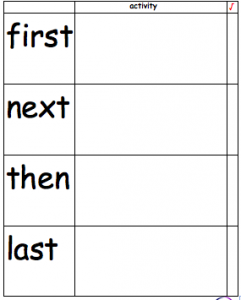
Step by step graphic
You may give them some tools to use to clarify their thinking – my favourites are graphic organisers and there are hundreds of websites and apps you can use just google it and see. I also think that if each student had a chance to discover which 2 or 3 were their favourites they could use them over and over when they needed to plan out their thoughts.
There are, of course, many more things I would like to tell you but taking my own advice in information overload, I’ll leave that for another time.
Finally my dear pre-service teachers, remember teaching and learning is meant to be ‘FUN’ don’t let anyone tell you otherwise. Now get out there and make a difference!
Thanks for reading 🙂

